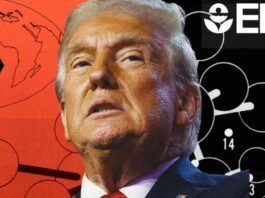President Donald Trump’s second term in office has kicked off with a whirlwind of executive orders that are reshaping the federal government and putting pressure on America’s governing institutions. But beyond the headlines, a new story is unfolding—one that involves the formation of a new coalition within the GOP. This coalition, composed of various factions vying for influence within the administration, is crucial to the president’s success. The key question now is who will be included in this coalition and who will be left out.
In evaluating potential members of this coalition, two critical criteria stand out: having skin in the game and a bias toward action. Two groups that easily meet these criteria are the Tech Right and the dissident Democrats. The Tech Right, led by figures like Elon Musk, David Sacks, and Marc Andreessen, have taken personal and financial risks to support Trump. These individuals have risked their reputations in Silicon Valley by openly endorsing a president who was once shunned in their community. Additionally, they are action-oriented and bring technical expertise that was lacking in Trump’s first presidency. Their presence in the coalition is expected to be a net positive, despite potential disagreements on certain issues.
On the other hand, there are factions that should be excluded from the coalition. The so-called principled conservatives, who have been critical of Trump from a center-right perspective, are seeking to position themselves as moral arbiters. However, their tendency toward abstract debates and endless critiques could hinder the administration’s progress. Similarly, the “reasonable centrists,” who hold minor heterodox positions on certain issues, should also be sidelined. These individuals often oppose taking action and prefer to remain above the fray, dispensing advice from a distance.
As the administration transitions from the excitement of its first week into the day-to-day grind of governance, the composition of the coalition will become increasingly crucial. The conservative movement must resist the temptation to adopt an “all-are-welcome” approach and instead be discerning about who is included. Embracing the Tech Right and dissident Democrats while excluding the principled conservatives and reasonable centrists will maximize the administration’s political potential and ensure that meaningful progress is achieved.
In conclusion, as the second Trump administration moves forward, the decisions made about the coalition will shape its trajectory. By carefully selecting members based on their commitment to action and their alignment with the president’s goals, the administration can set itself up for success. It’s a balancing act that requires strategic thinking and a clear-eyed assessment of each faction’s contribution to the overall mission. The choices made now will have lasting implications for the future of the GOP and the country as a whole.




